Brown Rat
(Rattus norvegicus)
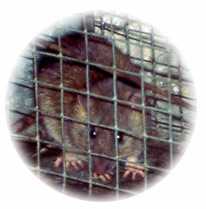 Brown rat caught in a trap.
Brown rat caught in a trap.
In Roskilde Fjord and Isefjord rats are probably the greatest threat to birds that brood in colonies.
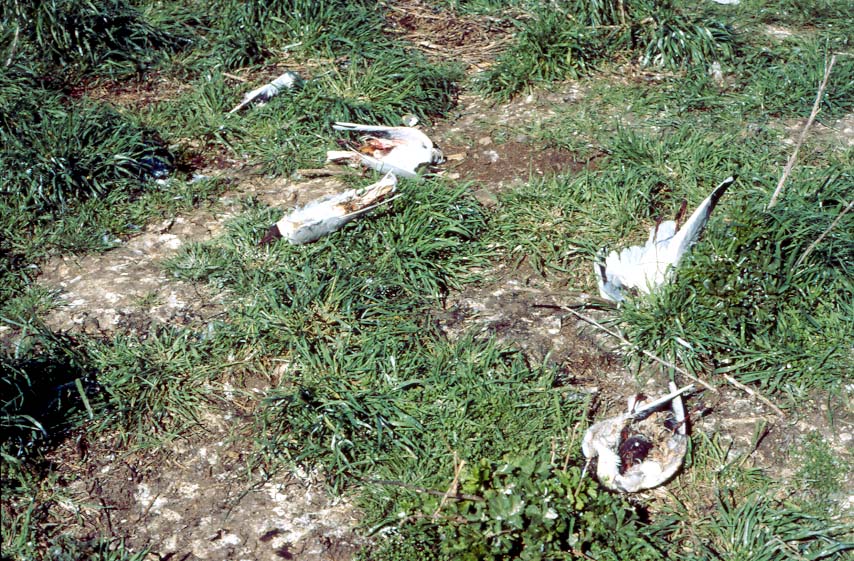 Adult black-headed gull killed and gnawed by rats.
Adult black-headed gull killed and gnawed by rats.
In 1986, the worst year for rat attacks, 500-1,000 adult gulls and terns were found bitten to death, and it is estimated that about 10,000 eggs and young birds were destroyed by rats. Black-headed gull, common gull, common tern and Arctic tern are the most vulnerable, and only mute swans and herring gull can hold their own against rats.
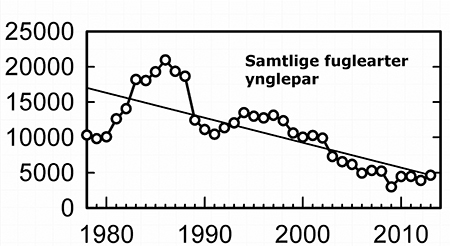
The population development graph (for all breeding birds in the fjord) shows that the 1986 rat attacks almost halved the total breeding-bird population of the fjord, and most of the victims were black-headed gulls.
Rats are able to swim out to the islands closest to the coast. We have seen 3 rats drowned, in early summer, in an eel net over 100 metres from land. Birds, in their breeding season, constitute a significant part of rats’ diet. But rats eat almost anything, and can also eradicate water voles on the islands.
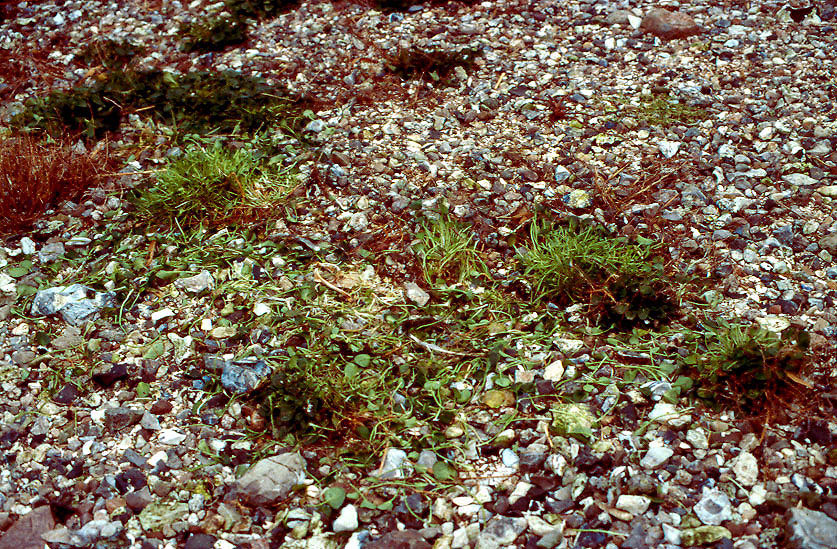 In winter rats eat scurvygrass and other plants.
In winter rats eat scurvygrass and other plants.
In the colder months they survive on plants, and bottom feeders that they can get hold of at low water. Rats are impressively and alarmingly adaptable. Hard winters are among the few natural forces that can reduce the rat population, but nowadays intensive pest control comes hand in hand with our monitoring of nature and rats have been practically eradicated on all the islands in the two fjords.
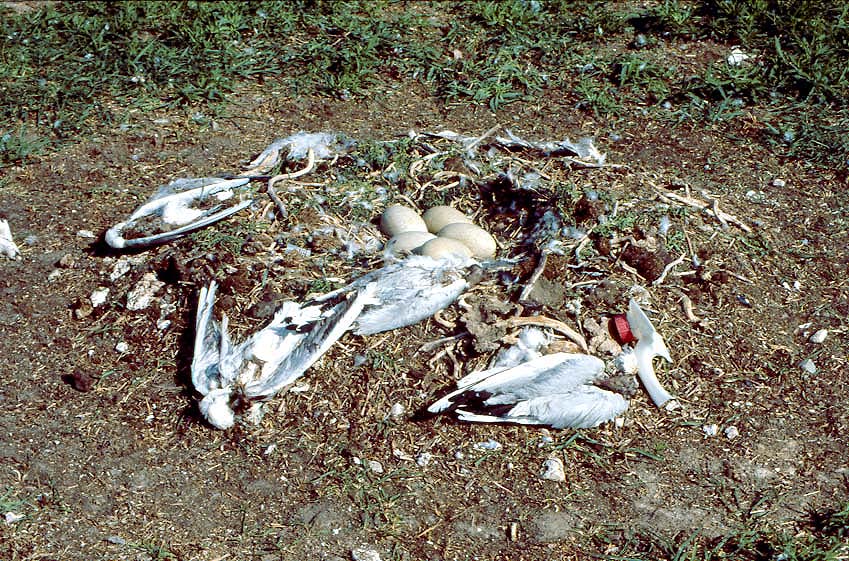 Mute swans’ nests lined with gull corpses left by rats..
Mute swans’ nests lined with gull corpses left by rats..
A curious fact – in 1989 there were so many gnawed gull corpses on Ringø that the mute swans used them as nesting material.
Key to the Distribution Map
